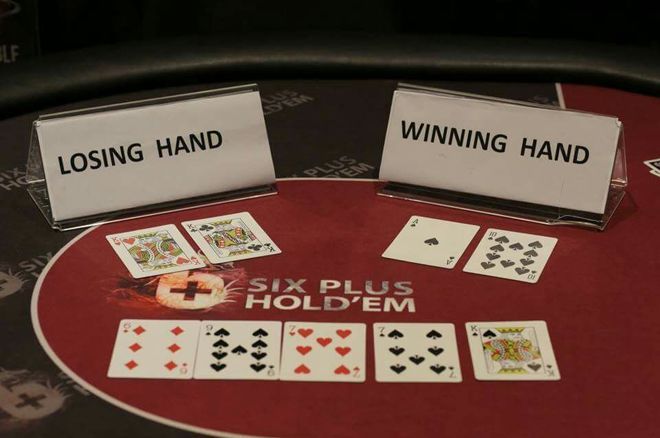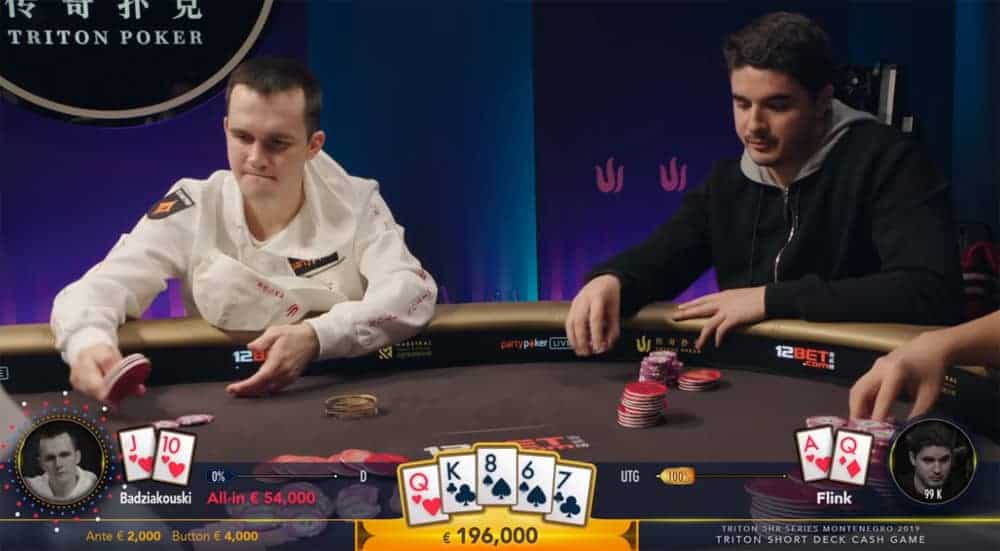Short Deck Strategy
Here are the re-worked poker hand rankings for Short-Deck Poker (.reflects a hand that’s ranked differently): 1. Straight Flush 3. Four of a Kind 4. Three of a Kind 8.
- Short Deck Strategy Examples
- Short Deck Strategy For Differentiation
- Short Deck Strategy Builder
- Short Deck Poker Strategy
- Short Deck Holdem Strategy
- Here are 5 key strategy differences to pay attention to when learning the rules of Short Deck poker: 1) Pocket Pairs Have a Higher Value in Short Deck Poker Your chances of hitting a set in Short Deck poker are higher than they are in standard Hold'em so all your pocket pairs go up in value.
- Dec 07, 2018 Short Deck is certainly a different game, but not so different that you should disregard your typical No Limit Hold’em strategy. Many concepts still apply, like playing loose on the button, defending your big blind with a wide range, and 3-betting with a well-structured range.
Short Deck Strategy Examples
Table Of Contents
Short Deck, or 6+ Hold’em as it’s sometimes known, is the game of choice for the high stakes cash games and tournament specialists around the world. Check out the GGPoker lobby and you’ll see daily tournaments with $10,000 buy-ins that are frequented by the game’s superstars.
Playing a new poker variant can be daunting, but if you’ve ever played Texas Hold’em, you’re already more than halfway there to being proficient at Short-Deck.
The game takes its name from the fact you play with a stripped, or short, deck. The 6+ Hold’em moniker was given because all cards from deuces through fives are removed from a standard 52-card deck. Only sixes through aces remain. This leaves you playing with a 36-card deck, which alters some of the hand rankings, more on that a little later.
Just as in a traditional Hold’em game, aces can be high or low when it comes to making a straight. The lowest possible straight you can make is , think of the ace as the missing five!
The Difference in Hand Rankings

Check the hand ranking rules the online poker site you’re playing Shot Deck is using. There are slight variations and you don’t want to be left with egg on your face when you think you’ve won a big pot only to see it slide to one of your foes.
You can see the different poker hand rankings in the table below. You’ll see the three weakest and three strongest hands are exactly the same regardless of the most common rules. It’s in the middle of the pack where the rankings alter, with straights sometimes losing to three of a kind, and flushes beating full houses.
This is because of the stripped deck, meaning the math behind each hand is altered.
Short Deck Strategy For Differentiation
| Regular hold'em | Short deck (straights beat trips) | Short deck (trips beat straights) |
|---|---|---|
| Royal Flush | Royal Flush | Royal Flush |
| Straight Flush | Straight Flush | Straight Flush |
| Four of a Kind | Four of a Kind | Four of a Kind |
| Full House | Flush | Flush |
| Flush | Full House | Full House |
| Straight | Straight | Three of a Kind |
| Three of a Kind | Three of a Kind | Straight |
| Two Pair | Two Pair | Two Pair |
| One Pair | One Pair | One Pair |
| High Card | High Card | High Card |
What's This? No Blinds?
Be aware there are no small or big blinds in Short-Deck because the game uses an ante-only structure. This can take some getting used to because it’s completely different to what you’re used to, but it is what drives the action.
Everyone at the table pays an ante and the button pays a double ante. The order of action is clockwise from the player to the immediate left of the button. This ante-only format creates more action for two reasons. First, there is more money in the pot compared to a traditional hold’em game. Second, more players stick around for the flop because they’re often priced in to do so.
For example, in a standard $0.50/$1 hold’em cash game there is $1.50 in the pot before the preflop betting round: the $1 big blind and the $0.50 small blind. The same game but in Short-Deck format has $7 in the middle before the hands are dealt. This is made up of five $1 antes and a $2 double ante.
It doesn’t take a genius to see why pots grow larger faster in Short Deck games.
Being Adaptable Is The Key
Short Deck Strategy Builder
Short Deck experts excel in adapting to these new rules and conditions, but those new to the game often approach Short Deck in the same way as a traditional hold’em game.
They forget suited hands lose value because flushes are harder to make. Looking down at in normal hold’em results in your considering entering the pot and hoping to flop a monster. In Short Deck, this hand is the equivalent of however.
There’s also a lot more limping preflop compared to a traditional game. This makes note-taking very important because some players have a loose limping range with others playing far more tightly.

The best way to improve at Short-Deck is the same way for any other poker variant and format: practice. Nothing makes up for racking up experience by playing the game, so go do that.
If you want arming with some more Short Deck info, why not give a click to the links below as they’ll whisk you away to several different Short Deck strategy articles.
More Short Deck Reading
Some starting hand tips for Short Deck Hold’em
Low connectors such as 7♣ 8♠ are going to have less value, as even if we flop a straight say on a 9♠ 10♠ J♣ board then someone could easily have Q♣ K♠ and we are going to be drawing almost dead.

Drawing hands on flush boards
Will prove less lucrative than in Hold’em for example, we have 8♠ 8♣ and the flop comes down 8♥ 10♥ K♥ in regular hold’em we still have 35% equity on this board even if our opponent has been lucky enough to flop a flush, as we can win with the board pairing or the case 8 rolling off. In Short Deck where flushes out rank full houses our equity is reduced greatly to below 7% as we will need to hit the case 8♦ and making 4 of a kind to bag the win. With other hands such as Q♠ J♠ we have zero equity against a flopped flush, so it is a good idea to keep the pot small with these types of holdings as flushes are so strong players are likely to slow play these types of boards in the hopes of opponents like us hitting our straight draws and then putting in large bets on the river.
Don’t be fooled by big pocket pairs hand strength
Hands like K♠ K♣ are still the second highest ranking hand however the equities run so close in this game that even against a hand such as A♦ K♦we will only drag the pot 55% of the time, compared to the 66% equity we would have with a 52 card deck.
Another eye opener for a new Short Deck hold’em player will be how much equity J♣ 10♣ has even against the strongest of holdings, such as A♦ A♠ we will win this around 40% of the time, around double our chances of that in regular hold’em where we would have 21.5%

Weak Ace High hands have poor playability in Short Deck
In regular No limit Hold’em an offsuit Ace high hand such as A♠ 8♣ would make us a favorite over a suited hand such asQ♦ K♦ in Short Deck hold’em the opposite is true, holding the suited connector would make us a 57% favorite over the Ace high hand. In general, we want to be playing the low offsuit combinations of Ace high rarely and if at all not in bloated pots, as there is never really a great outcome for playing a hand such as A♠ 8♣
For example, if the flop comes A♣ 8♦ J♦this can be deceiving for a modest player as a good flop, we have two pair! Great, Right?! Hmm, not really, these are dicey waters in Short Deck poker, say at worst our opponent is going to continue with a hand like A♥ Q♥ even against this hand we only have a small edge with 53% in equity. The dangerous part about continuing with a board like this in Short Deck is that there aren’t many good turns or river cards for our hand, any next card makes straights or better two pairs possible, any diamond makes a flush possible, if the Jack on the board pairs we will have our two pair counterfeited.
Pick good bluff candidates

Middle and bottom pairs are great semi-bluffing hands in Short Deck Hold’em because these pairs have less showdown value and so you are less incentivized to try to check down with them. When called you are more likely to improve your hand as there are fewer cards in the deck.
Short Deck Poker Strategy
Have a mixed limping strategy
Limping into pots with a balanced range of strong, medium and weak holdings can not only allow you to see cheap flops with hands that play well on certain boards like suited connectors and pocket pairs trying to connect, but you can also balance this strategy by including hands like A♠K♣, K♣ K♠ and Q♠ Q♣ in your limping range, along with weak holdings such as 6♣ 7♣ and hands of this nature will serve two purposes.
Short Deck Holdem Strategy
Allows us to limp, 3bet for value VS any aggressive players that are raising hands such as A♣ J♠ and pairs such as 10♠ 10♣ profitably and play bigger pots with a strong range advantage or just pick up the pot pre-flop with even more dead money after the raise and any calls that followed.
The second part of this strategy that can be very lucrative for us, is playing a Pot with a deceptively strong hand after the flop, for example if we include Q♠ Q♣ into our limping range and the flop comes A♠ Q♦ 8♦ and our opponent has a hand like A♠ 8♣ then we are well disguised and set to win some bets from our opponent.
Want to play Short Deck Hold’em?
Join in the action today on Pokerstars.
Pokerstars are offering a great deal for new players, where you can get £20 Freeplay T&Cs apply.
There has never been a better time to get involved with this great new game mode on the site 6Plus Hold’em!